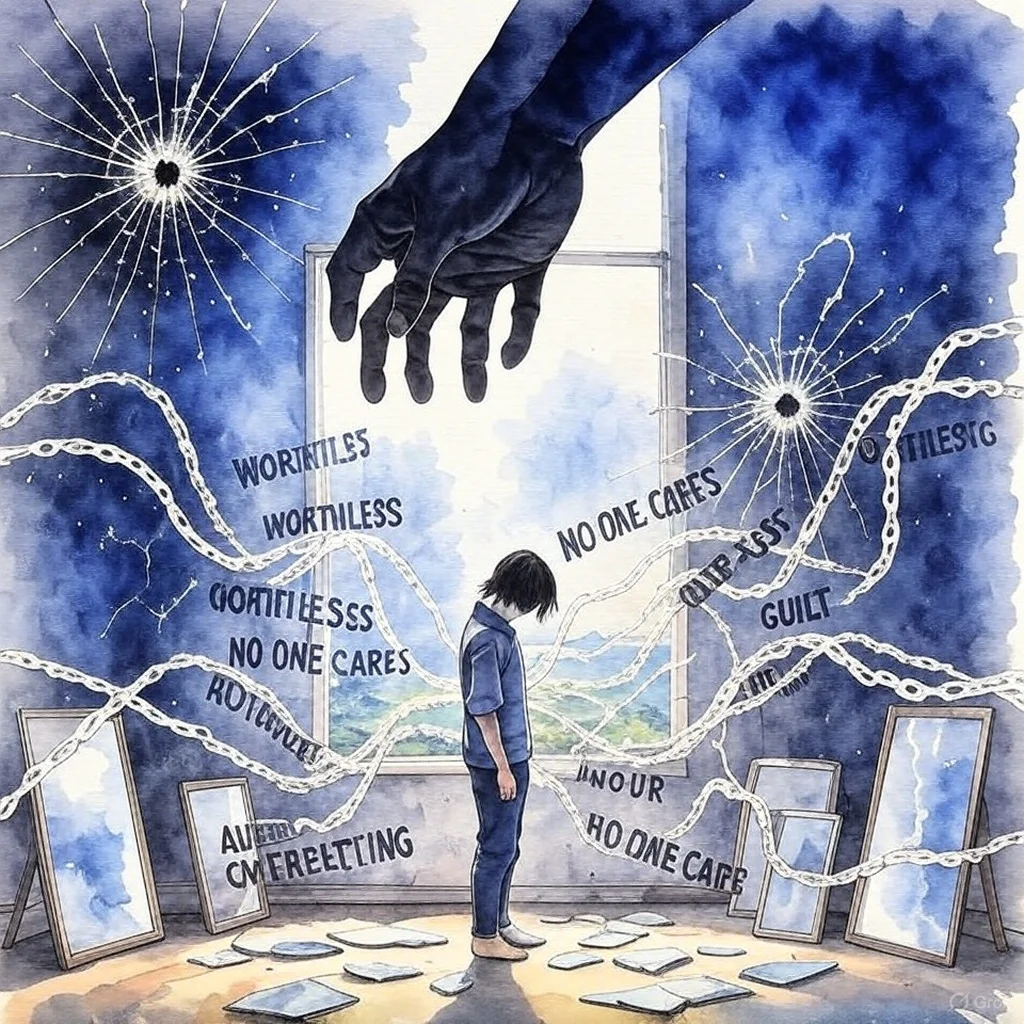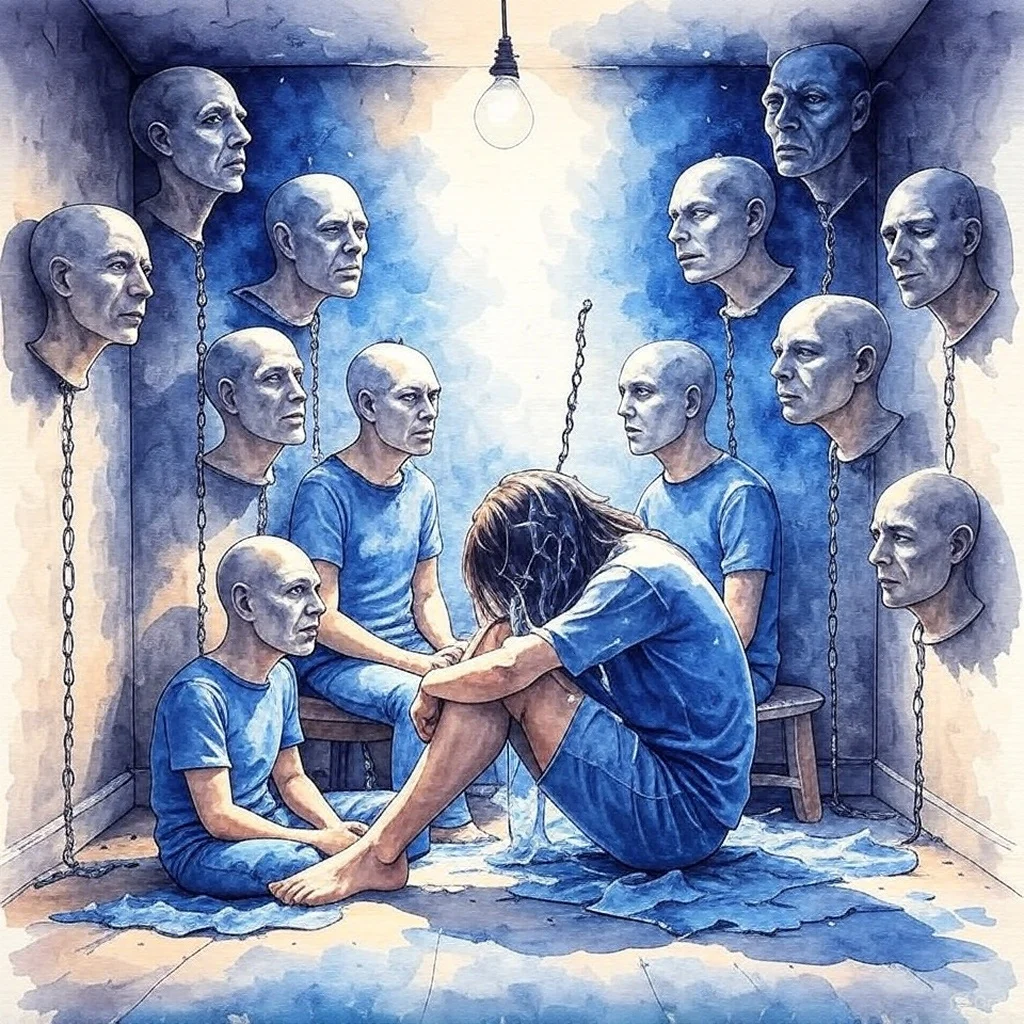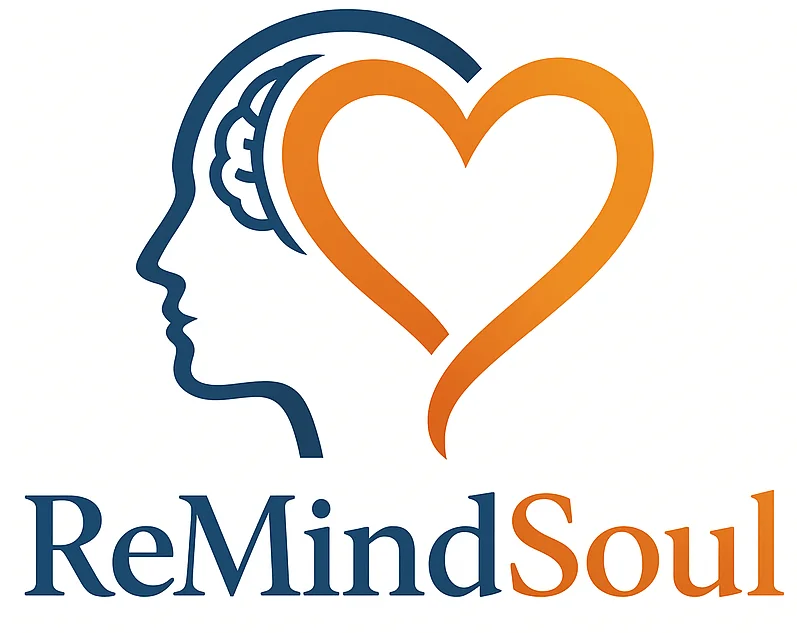Trauma & Abuse 💚
Guide to recognizing and overcoming emotional abuse, narcissistic relationships, and childhood neglect. Reclaim your identity, safety, and inner peace.
Trauma & Abuse: Your Complete Guide to Emotional Healing
Healing from trauma and abuse is not about letting go of your past but about reclaiming your sense of identity, safety, and peace. Trauma reshapes how you see yourself and how you perceive the people and world around you.
Whether you have experienced emotional abuse, childhood neglect, or deep emotional wounds left by narcissistic relationships, this guide will help you recognize and understand your trauma and find a path to healing. Emotional healing is absolutely possible through guided steps, evidence-based practices, and compassionate support.

Overcoming Trauma
Signs of Emotional Trauma in Adults
Trauma creates measurable neurobiological changes in the brain, impacting key structures: the hippocampus (memory and stress regulation), the amygdala (fear center), and the prefrontal cortex (rational thinking center). These changes represent a neural adaptation to chronic threats, and your prefrontal cortex struggles to function normally. The body’s stress response system is also altered.
This is not weakness. It is your nervous system trying to protect you.
Trauma Signs
Emotional and Mental
- Difficulty trusting others
- Disrupted sleep patterns
- Hyperarousal
- Distorted sense of self-worth
- Fear of intimacy
- Blurred boundaries
Physical and behavioral
- Digestive issues
- Chronic tension
- Unexpected pain
- Emotional numbness or withdrawal
- Fatigue
- Startle response
- Restlessness
Key Takeaway
Trauma is not just stored in your thoughts. It embeds in your nervous system, body, and subconscious patterns. Getting over trauma is not simple because it reshapes how you perceive trust, safety, and self-worth.
Trauma Types and Experience
Understanding your trauma helps identify effective healing strategies:
- If You Experience: Gaslighting, control, idealization and devaluation
You May Be Dealing With: Narcissistic abuse - If You Experience: Emotional, physical, or financial control
You May Be Dealing With: Abusive marriage - If You Experience: Humiliation or chronic criticism
You May Be Dealing With: Verbal abuse - If You Experience: Blame-shifting, reality distortion
You May Be Dealing With: Psychological abuse - If You Experience: Emotionally unavailable caregivers
You May Be Dealing With: Emotional neglect - If You Experience: Lack of protection or care
You May Be Dealing With: Childhood neglect - If You Experience: Any lasting distressing event
You May Be Dealing With: General trauma or PTSD
Many people face overlapping trauma, and healing involves addressing several layers at once.
Trauma Test and Assessment
Take a moment to reflect on these questions. There is no right or wrong answers.
- Do you often feel on edge or have trouble relaxing, even in safe environments?
- Do you struggle to trust others or feel anxious about getting close to people?
- Do you experience physical symptoms like tension, fatigue, or digestive issues without clear medical causes?
- Do you find yourself replaying past events or avoiding certain situations that remind you of difficult experiences?
- Do you feel disconnected from yourself or notice emotional numbness in your daily life?
If you answered yes to two or more questions, you may be experiencing trauma responses. This guide can help you understand and begin your healing journey.
Healing from Trauma
Trauma recovery begins with acknowledgment and creating safety in the present. The core healing principles are as follows:
1. Ground Yourself in the Present
- An important technique is the 5-4-3-2-1 method. Name 5 things you see, 4 things you can touch, 3 you hear, 2 things you smell, and 1 you taste.
- Use the box breathing technique (inhale, hold, exhale, hold for 5 seconds each) to calm your body.
2. Seek Trauma-Informed Therapy
- Somatic Experiencing: Releases trauma stored in your body.
- Cognitive Processing Therapy: Challenges distorted trauma beliefs.
3. Build Safe Connections
- Healing happens through relationships. Begin with a support group or therapy and expand to trusted and consistent people.
Remember: Healing does not erase memories. It transforms your relationship with them, freeing your present life.
Healing From Abusive Marriage
Signs of Emotional Abuse in Marriage
Abuse in marriage, whether emotional, physical, financial, or psychological, slowly erodes self-worth and distorts reality.
Abuse is never your fault. Leaving is strength, not failure.
A narcissistic marriage often involves one partner dominating the relationship through manipulation, control, and lack of empathy. The other partner feels unworthy, confused, and emotionally drained.

Verbal and Emotional Manipulation
Verbal
Behavior
- Constant criticism, name-calling, or insults
- Belittling your interests, opinions, or achievements
- Blaming you for everything that goes wrong
- Gaslighting: twisting facts or denying events
- Silent treatment as punishment or control
- Jokes or sarcasm that humiliate
Impact
- Destroys self-esteem and confidence
- Creates self-doubt and dependency
- Triggers confusion and guilt
- Makes you question your sanity or memory
- Causes emotional isolation or fear
- Undermines self-worth and dignity
Gaslighting turns your reality into their narrative.
Control and Isolation
Behavior
- Monitoring your conversations or movements
- Discouraging contact with loved ones
- Making all decisions without your input
- Demanding expense proof or controlling finances
- Tracking your devices or location
- Restricting your independence
Impact
- Invades privacy and induces fear
- Creates emotional dependence
- Removes equality and autonomy
- Restricts your independence
- Violates personal boundaries
Key Takeaways
Abuse does not always show bruises. Emotional and psychological control can be equally damaging, leaving long-term scars on your identity and trust.
Self-Assessment Activity
Take a moment to reflect on your relationship. Read through the signs above and ask yourself:
- Which behaviors do I recognize in my relationship?
- How often do these patterns occur?
- How do I feel after interactions with my partner: energized or drained, confident or confused?
- Do I feel safe expressing my thoughts and needs without fear of criticism or punishment?
Write down your observations. Recognizing patterns is the first step toward reclaiming your clarity and power.
Recovery from Abusive Marriage
1. Reconnect with Your Support Network
- Abusers isolate their partners. Reaching out to trusted friends, family, or domestic violence advocates restores connection and perspective.
2. Practice Counter-Affirmations
- Replace internalized abuse with truth. For example: “My feelings are valid,” “I deserve respect,” and “Abuse is never my fault.”
3. Create a Safety Plan
- If your situation does not change, collaborate with domestic violence advocates to develop a plan including legal protection, finances, and emergency contacts.
Key Insight: Leaving an abusive relationship is NOT a failure. It is self-protection and courage. Your well-being and safety matter more than preserving a harmful marriage.
→ Recovery Roadmap: Safely leave an abusive marriage and reclaim your identity.
Healing from Emotional Trauma
Emotional trauma is invisible, hiding beneath the surface, yet it is powerful. It stores itself in your body and nervous system, influencing how you respond to love, stress, and vulnerability. Though unseen, emotional trauma can shape your beliefs, behaviors, and sense of safety.

Signs of Emotional Trauma in Adults
Emotional trauma may stem from loss, abuse, betrayal, neglect, disasters, accidents, or prolonged stress. Its impact shows up physically, emotionally, and behaviorally.
Emotional and Psychological Signs
- Emotional numbness or persistent sadness
- Anxiety, excessive fear, and panic attacks
- Sudden mood swings or irritability
- Difficulty feeling safe or trusting others
- Flashbacks, nightmares, or intrusive memories
- Feelings of guilt, worthlessness, or shame
Physical Signs
- Muscle tension or chronic pain
- Fatigue or insomnia
- Stomach issues, headaches, or tightness in the chest
- Weakened immune system
- Shortness of breath or rapid heartbeat
Behavioral or Relational Signs
- Avoidance of trauma reminders
- Withdrawal from friends and family
- Overeating, overworking, or substance use
- Difficulty concentrating or making decisions
- Emotional overreactions to small triggers
Emotional wounds may be silent, but they shape how you live, love, and connect.
Self-Assessment: Emotional Signs
- Have you noticed persistent feelings of sadness or numbness that linger throughout your day?
- Do you experience sudden waves of anxiety, fear, or panic that seem difficult to control?
- Do you struggle to trust others or feel safe in relationships?
- Do certain memories keep replaying in your mind, or do you carry ongoing feelings of guilt or shame?
- Have you observed sudden mood swings or heightened irritability in your responses to everyday situations?
If you answered yes to several of these questions, you may be experiencing signs of emotional trauma that deserve gentle attention and care.
Deliverance from Emotional Trauma
For many, emotional healing involves both spiritual and therapeutic renewal to release inner wounds and find inner peace.
Biblical and Spiritual Steps
- Acknowledge the pain: Healing starts with honesty before God. “Cast all your anxiety on him because he cares for you” (1 Peter 5:7).
- Forgive and release: Unforgiveness binds you to the trauma; forgiveness brings freedom (Matthew 6:14-15).
- Renounce lies and accept truth: Replace “I am broken” with “I am healed and whole in Christ.”
- Pray for deliverance: Ask God to heal your wounded heart.
- Seek community and accountability: Healing happens in safe, trusting, and prayerful relationships rather than in isolation.
Example Prayer for Deliverance
“Oh Lord, I surrender every memory, wound, and fear to You. Lord of the World, heal my heart, mind, and soul. Remove bitterness, shame, and fear. Fill my heart with peace and love. I forgive those who hurt me, and I receive Your blessing and freedom. Amen.”
How to Recover from Emotional Trauma
1. Somatic Work
- Trauma-sensitive yoga, gentle movement, or shaking exercises help release tension. Your body holds what your mind cannot always process.
2. Mindfulness Practice
- Observing emotions without judgment reduces reactivity and supports nervous system regulation. Body scan meditations rebuild the mind-body connection.
3. Expressive Writing
- Journaling for 15-20 minutes daily about traumatic experiences helps organize thoughts and externalize pain. Writing transforms chaos into clarity.
4. Reconnecting Spiritually
- Daily prayer, worship, healing scriptures, or meditation. Gratitude journaling to shift focus from pain to hope.
Truth: Healing emotional trauma is not about fixing yourself. It is about learning to feel safe in your own body again.
→ Recovery Roadmap: Learn how to heal from emotional trauma and restore inner peace.
Healing from Narcissism
Signs and Effects of Narcissistic Abuse
Narcissistic abuse creates deep psychological wounds because it systematically dismantles your sense of self-worth, reality, and autonomy through repeated cycles of idealization, devaluation, and discard.
Whether the abuser is a parent, partner, friend, or colleague, the experience leaves emotional scars that may take years to heal. For example, a narcissistic mother may use emotional blackmail, guilt, or favoritism to control her child, shaping their sense of worth around her approval.
What is a Narcissistic Abuser?
A narcissistic abuser displays traits of Narcissistic Personality Disorder (NPD), which include lack of empathy, entitlement, and an insatiable need for admiration and control. The common traits of narcissism are:
- Lacking empathy, invalidating or dismissing your emotions.
- Exploiting others for personal gain and viewing people as tools rather than individuals.
- Manipulating facts and twisting reality to cause self-doubt and confusion.
- Reacting with rage or withdrawal when denied constant admiration.
A narcissist does not love you—they love how you make them feel.

Signs of Narcissistic Abuse
Narcissistic abuse often begins subtly, disguised as admiration, affection, or connection. Over time, manipulation and control replace affection, care, and warmth. The common signs include:
- Blame-shifting: Projecting their faults onto you.
- Gaslighting: Denying your experiences until you question your own memory.
- Love-bombing and devaluation: Alternating between extreme affection and cruelty.
- Silent treatment: Withholding affection to control or punish.
- Control and isolation: Undermining your confidence and independence.
- Triangulation: Using others to create competition or jealousy.
Fact: You may begin to feel confused, anxious, and responsible for everything—even what is not your fault.
The Narcissistic Abuse Cycle
Understanding the abuse cycle helps you recognize that the abuse was never your fault.
- Idealization: You are placed on a pedestal and showered with care and attention, creating emotional dependency.
- Devaluation: Criticism and emotional withdrawal begin, slowly eroding your self-esteem.
- Discard: You are abandoned, blamed, or replaced, leaving you confused and desperate for answers.
This repeating cycle creates trauma bonding—an emotional addiction to the alternating affection and rejection.
Effects of Narcissistic Abuse
Narcissistic abuse has profound and long-lasting impacts. You may experience:
- Depression, anxiety, and emotional numbness
- Chronic self-doubt and confusion
- Guilt and low self-esteem
- Difficulty trusting others
When the abuser is a parent, particularly a mother, the damage can shape your entire sense of identity. Such parents may use guilt and comparison, invalidate your emotions, and compete with you.
As an adult, if you grew up with narcissistic parents, you often struggle with self-worth, boundaries, and fear of rejection. The wound is not limited to what was done to you, but extends to what you were taught to believe about yourself.
Self-Assessment: Recognizing Narcissistic Abuse
Take a moment to check in with yourself. If these statements resonate with you, it may be time to seek support and prioritize your healing.
- Do you constantly second-guess yourself or feel like you’re “going crazy”? Gaslighting may have distorted your sense of reality and self-trust.
- Do you feel responsible for someone else’s happiness, anger, or behavior? You may have been conditioned to absorb blame that was never yours to carry.
- Do you walk on eggshells to avoid conflict or emotional outbursts? Living in fear of someone’s reactions is a sign of emotional manipulation and control.
- Do you feel emotionally drained, anxious, or confused after interacting with certain people? Healthy relationships energize you; toxic ones deplete you.
- Do you struggle to recognize your own worth without external validation? If your sense of value depends on someone else’s approval, your self-esteem may have been systematically eroded.
Recognizing the pattern is the first step toward breaking free. Your feelings are valid, and you deserve to heal.
Healing from Narcissistic Abuse
1. Rebuild Self-Trust
Narcissistic abuse teaches you to doubt your worth and instincts. To overcome self-doubt, start trusting your feelings about minor situations and honor your intuition.
2. Establish Gray Rock or No Contact
Continued engagement feeds the abuser’s need for control.
- Gray rock: When avoidance is not possible, stay unreactive and neutral.
- No contact: Block communication and cut ties completely.
3. Reclaim Self-Validation
You once sought approval from someone who weaponized it. Now affirm yourself:
- “My feelings are real.”
- “I handled that situation well.”
- “I am proud of setting boundaries.”
→ Learn Advance: Break trauma bonds and rebuild self-worth after narcissistic abuse.
Healing from Mental Abuse
The Impact of Mental Abuse
Mental abuse leaves behind deep guilt, confusion, and self-doubt. It involves sustained humiliation, manipulation, and control that attack your memory, perception, and sanity through tactics like projection, gaslighting, minimization, and blame-shifting.
The abuser’s voice often lingers long after they’re gone, echoing as doubt or self-criticism.
“Healing is about reclaiming your narrative. You are not what happened to you.”

PTSD from Mental Abuse
Mental abuse can result in long-lasting emotional trauma that mirrors Post-Traumatic Stress Disorder (PTSD). You may experience:
- Flashbacks or intrusive memories
- Insomnia and nightmares
- Emotional numbness or chronic anxiety
- Hypervigilance, where you constantly anticipate conflict or criticism even in safe spaces
These symptoms arise from prolonged exposure to manipulation and control. The abuser repeatedly distorts your reality, leaving you unsure of what is real.
Signs of Mental Abuse in a Relationship
The first step toward freedom from mental abuse involves understanding the subtle patterns of abuse. Common signs include:
- Constant gaslighting, where you’re told your feelings or memories are wrong
- Minimization, where you hear “you’re too sensitive” or “you’re overreacting”
- Projection, where you’re accused of behaviors the abuser is guilty of
- Blame-shifting, where you’re made to feel responsible for their actions
You may live in a constant state of fear and confusion, walking on eggshells to avoid emotional explosions. Over time, your self-trust fades and your confidence erodes.
Awareness is your first act of resistance.
Self-Assessment: Recognizing Mental Abuse
Take a moment to reflect on your relationship:
- Do you often question your own memory or feel like you’re “going crazy”?
- Do you find yourself constantly apologizing or walking on eggshells to avoid conflict?
- Notice if you feel diminished, confused, or afraid to express your true thoughts and feelings.
- Do these patterns leave you feeling drained, anxious, or disconnected from yourself?
- Trust what you’re feeling—your inner voice matters, and recognizing these signs is the first step toward reclaiming your peace.
Healing from Mental Abuse
Healing is about reclaiming your voice and truth.
- “The voice that told you that you were not enough was lying.”
- “Survival was the first victory; peace is the next.”
- “You are not what happened to you. You are who you choose to become.”
- “Healing is about remembering who you were before someone taught you to doubt yourself.”
These reminders can help you rebuild clarity, strength, and self-worth.
Recovering from Mental Abuse
Recovery from emotional abuse involves the process of rebuilding your identity and inner peace after prolonged manipulation.
1. Replace internalized criticism
When you notice self-critical thoughts, ask: “Is this my authentic voice, or something that was said to me?”
2. Reality-testing through therapy
A trauma-informed therapist can help separate distorted messages from truth.
3. Reconnect with your authentic self
Engage in inner child work, creative expression, and reparenting to rediscover who you were before the abuse. Reconnect with supportive friends, passions, and activities that affirm your value.
“You are not losing your mind. Mental abuse makes you question your reality.”
→ Recovery Roadmap: Overcome mental abuse and reaffirm your self-value.
Healing from Verbal Abuse
Words can wound deeply, and healing from verbal abuse means unlearning the lies spoken over you and replacing them with compassion and truth.
Verbal abuse, whether from an angry parent, a narcissistic partner, or during bipolar rage, can distort how you see yourself. These experiences often leave scars that erode your sense of worth and silence your inner voice.
Healing takes time, patience, and a conscious choice to reprogram your mind with truth and love.
Narcissistic Verbal Abuse
Narcissistic verbal abuse follows a cycle of idealization, devaluation, and control. A narcissist uses gaslighting, insults, and manipulation to keep you off balance and dependent.
They twist your words and target your insecurities. They dismiss or mock your feelings and emotions. They make you doubt your sanity, memory, or perception.
This constant erosion of confidence leaves you feeling anxious, powerless, and confused.
You are not what a narcissist says you are. You are what your true self knows you to be.
Signs of Verbal Abuse
Verbal abuse is often subtle at first and might sound like constant correction, sarcasm, or jokes at your expense. Over time, it escalates into anger and aggression.
Common signs of verbal abuse include:
Belittling or constant criticism can wear down your confidence.
Humiliation disguised as humor or sarcasm makes you question whether you’re “too sensitive.” Threats, yelling, or name-calling create an environment of fear.
Silent treatment or withdrawal of affection leaves you feeling isolated and rejected. Interrupting or dismissing your opinions signals that your thoughts don’t matter.
If you consistently feel anxious, small, and ashamed after interactions, that’s not normal—it’s abuse.

Bipolar Rage and Verbal Abuse
When someone with untreated bipolar disorder experiences mania or intense anger, verbal abuse may occur. While the rage may not be intentional, the emotional damage can still be severe.
Being on the receiving end of explosive anger creates anxiety, fear, and instability. It’s important to differentiate between abuse and illness.
Effects of Verbal Abuse on Women
Verbal abuse can deeply affect your identity and self-esteem. Over time, you may begin to doubt your attractiveness, intelligence, and worthiness of love. Common effects include:
- Emotional numbness, anxiety, and depression can take root in your daily life.
- Physical symptoms like fatigue, headaches, and insomnia may develop.
- Self-blame and guilt become constant companions. Difficulty trusting others makes relationships feel impossible.
Many survivors internalize the abuser’s words and believe them to be true. Healing involves rewriting those false scripts with truth, compassion, and affirmation.
Self-Assessment: Recognizing Verbal Abuse in Your Life
This assessment can help you identify patterns of verbal abuse and begin your healing journey.
Do you often feel anxious or walk on eggshells around this person, carefully choosing your words to avoid criticism or anger?
After conversations with them, do you frequently feel smaller, ashamed, or like you can’t do anything right?
Does this person regularly dismiss your feelings, twist your words, or make you question your own memory and perception?
Do you find yourself apologizing constantly, even when you’re unsure what you did wrong, or feel responsible for their mood?
Recognizing these patterns is not about blame. It’s about clarity, and clarity is the first step toward reclaiming your voice.
Recovery from Verbal Abuse
Healing from verbal abuse is about rebuilding and reclaiming your self-image with kindness and truth. Awareness empowers you to identify harmful behavior and begin reclaiming your boundaries.
1. Create a Truth List
Write down evidence that contradicts the abuser’s lies based on your strengths, achievements, courage, and kindness. When their words echo in your mind, read your truth list and focus on what’s real.
2. Rebuild Self-Expression
Reclaim your voice through art, journaling, singing, or therapy. You deserve to be heard, and expression is empowerment. The words that once gave you wounds can become the foundation of your strength, confidence, and truth.
3. Surround Yourself with Truth-Speakers
Spend time with people who see your worth clearly. Seek out uplifting books, podcasts, and communities that reinforce your value.
ealing from verbal abuse is not about forgetting the past—it’s about rewriting your narrative.
→ Recovery Guide: Unlearn toxic messages and rebuild your authentic self-image.
Healing from Abandonment and Rejection
Abandonment wounds, especially those rooted in childhood, often create painful trauma and an internal belief:
I am unlovable and will always be left.
This core fear can quietly influence how you love, think, and connect throughout life. When early caregivers were inconsistent, emotionally unavailable, or neglectful, a child learned that connection was unreliable or unsafe.
Moreover, these wounds may show up as emotional dependency, fear of loss, avoidance, or clinginess. Abandonment wounds do not just affect relationships; rather, they shape your entire sense of self-worth.
What Is the Difference Between Abandonment and Rejection?
These two wounds have distinct emotional roots.
Abandonment
It involves someone emotionally or physically withdrawing support, leaving you feeling unworthy or unsafe. It is linked to attachment trauma and can have long-term effects.
Abandonment whispers, “No one will ever stay.”
Rejection
It occurs when affection, love, or acceptance is withheld or denied. It triggers feelings of inadequacy and shame, though it may not always cause deep attachment fear.
Rejection says, “You do not want me.” Abandonment and rejection feed the belief that love is conditional, which creates fear of intimacy and emotional instability.

Understanding Attachment Wounds
Early abandonment issues often turn into attachment styles, influencing how you behave and bond in relationships.
• Anxious attachment: Constant worry that others will leave; needing reassurance and overanalyzing messages.
• Avoidant attachment: Emotional distancing, suppressing needs, and pushing others away to avoid potential pain.
• Disorganized attachment: A mix of craving closeness but fearing it, leading to self-sabotaging patterns.
Recognizing and understanding your attachment pattern allows you to respond with awareness instead of repeating old patterns and wounds.
Self-Assessment: Healing from Abandonment and Rejection”
- Do I notice moments when I fear being left, even when I’m safe?
- How often do I seek reassurance instead of trusting my own worth?
- When someone withdraws, do I assume it means I’m unlovable?
- Can I identify whether I’m reacting to the present or an old wound?
- Do I nurture myself with the same care I wish to receive from others?
Healing begins the moment you choose to see your wounds with compassion instead of fear.
How to Deal with Rejection and Abandonment Issues
Healing begins with acknowledgment. Your feelings of loneliness, fear, or shame are valid—but they are not your truth.
When emotions burst, pause and ask:
Am I being abandoned right now, or am I reliving an old wound?
Healing strategies:
• Engage in therapy or somatic work to process emotions.
• Use journaling to identify triggers and patterns.
• Instead of withdrawing, communicate your needs honestly.
• Practice grounding techniques to stay in the present.
Recovery from Abandonment Issues
Recovery from abandonment issues, also known as reparenting, is rooted in gentleness, consistency, and self-compassion.
1. Practice daily self-nurture
Be the caretaker of your inner child. Rest well, eat nourishing meals, and meet your needs with care and kindness. Tell yourself, “I can depend on me.”
2. Challenge catastrophic thinking
When pain or anxiety attacks, pause and rethink your reality and thoughts. Most people’s reactions reflect their own circumstances, not your worth.
3. Build secure attachment
Surround yourself with trustworthy and emotionally available people. Strong, consistent, and safe connections retrain your heart and brain to believe that “Not everyone leaves.”
→ Complete Guide: Heal from abandonment and rejection, develop secure attachment, and end the fear of being left out.
Emotional and Psychological trauma
Emotional and psychological trauma refers to the deep distress that arises after you witness or experience events that overwhelm your ability to cope.
These events include neglect, abuse, natural disasters, accidents, helplessness, and prolonged fear.
Unlike physical injuries, this form of trauma impacts your nervous system and brain, altering how you perceive trust, safety, and connection. Over time, it affects not only your emotional well-being but also your relationships, physical health, and self-perception.
Emotional and psychological trauma changes not just how you feel but how your nervous system experiences the world.

Effects of Emotional and Psychological Trauma
When trauma occurs, your brain’s alarm center (the amygdala) becomes overactive, while the area responsible for rational thought (the prefrontal cortex) becomes less engaged. This imbalance keeps your body trapped in a fight, flight, or freeze state, even after the threat is gone.
The effects of trauma are long-lasting, complex, and often misunderstood. You may experience:
- Hypervigilance and anxiety: always expecting danger, always on edge.
- Emotional numbing: feeling detached from your emotions or disconnected from yourself.
- Nightmares or sleep disturbances: your mind replaying unresolved fear.
- Sudden emotional outbursts: disproportionate reactions to small triggers.
- Difficulty remembering or concentrating: your brain’s protective response.
These symptoms do not represent weakness. They are normal responses to abnormal experiences.
Emotional and Psychological Harm
Trauma’s harm extends beyond emotions. It can reshape your self-worth, identity, and worldview. Many survivors:
- Blame themselves for what happened.
- Fear intimacy or lose trust in others.
- Struggle with relationships, alternating between neediness and withdrawal.
- Feel detached from their emotions or body.
Unresolved trauma can also manifest physically, leading to:
- Autoimmune conditions
- Chronic fatigue
- Hormonal imbalance
- Substance dependence
With emotional and psychological harm, your body remains flooded with stress hormones and is unable to return to balance.
Self-Assessment: Understanding Your Trauma Response
Take a moment to reflect on your experiences. Check the signs that resonate with you.
Do You Experience?
- Constant anxiety or feeling on edge?
- Emotional numbness or disconnection from yourself?
- Nightmares or intrusive thoughts?
- Intense reactions to small triggers?
- Difficulty concentrating or remembering?
- Self-blame for past events?
- Difficulty trusting others or fear of intimacy?
- Unexplained chronic fatigue or physical symptoms?
Healing from Psychological and Emotional Trauma
Recovery requires a holistic and compassionate approach that integrates your body, mind, and supportive relationships. Healing means retraining your brain to recognize safety, regulate emotions, and reconnect with your body.
1. Trauma-Sensitive Yoga
Trauma-sensitive yoga focuses on safety, choice, and body awareness. Instructors use invitational language that is gentle (“you might try”) and avoid correction or physical touch to honor your boundaries. This approach helps you:
- Regain a sense of autonomy and control.
- Rebuild connection with your body.
- Experience safety in physical presence again.
“The most powerful step in trauma recovery is feeling safe in your body.”
2. EMDR
Eye Movement Desensitization and Reprocessing (EMDR) is a proven trauma therapy that helps your brain process painful memories without forcing you to relive them. By engaging both sides of your brain through guided eye movements, EMDR helps your nervous system release the emotional charge associated with trauma. “EMDR signals your brain that the event is over and you are safe now.”
3. Community and Social Support
Healing from trauma happens in connection, not isolation. Joining support circles, sharing your story in safe friendships, or participating in groups can help normalize your experience and rebuild trust. Supportive relationships provide a sense of safety, understanding, and belonging.
→Healing Pathway: Rebuild safety, restore connection, and reclaim your inner calm.
Overcome Childhood Neglect
Neglect teaches a devastating lesson: your needs do not matter, and asking for help changes nothing. Unlike abuse, which is an action, neglect is an absence and a hidden form of abuse.
Neglect is the absence of emotional attachment, attention, protection, or care. Yet this wound cuts deeply and leaves invisible scars.
A neglected child learns that no one will notice when you are hurt, no one will come when you cry, and no one will care when you need comfort. Over time, this quiet wound shapes your self-worth, identity, and relationships well into adulthood.

The Impact of Childhood Neglect
Adults who experienced neglect often struggle with painful memories of the attention, care, and love that never came. This struggle manifests as:
- Difficulty recognizing your personal needs.
- Shame or guilt about having needs at all.
- A belief that love or care must be earned.
- Trouble with emotional regulation and self-care.
Those defenses were survival strategies, not flaws.
Self-Assessment: Signs of Childhood Neglect
Notice which statements resonate with your experience.
Do You:
- Struggle to identify your own needs or wants?
- Feel guilty or ashamed when you have needs?
- Believe you must earn love or care?
- Prioritize others while ignoring yourself?
- Forget to eat, rest, or care for yourself?
- Feel unworthy, invisible, or unimportant?
- Struggle to regulate your emotions?
- Feel uncomfortable receiving help or care?
Overcoming Childhood Emotional Neglect
Healing from childhood neglect begins with learning to name, notice, and honor your needs without bias or judgment.
Start small. Say to yourself: “I am hungry.” “I am tired.” “I am sad.”
At first, just acknowledge it. Do not rush to fix. This simple act reconnects your mind and body, rebuilding trust with yourself. Then meet one small need each day:
- Make a comfortable meal.
- Take a quiet walk.
- Rest when you feel tired.
- Buy yourself something joyful.
These small gestures become the foundation of emotional nourishment, teaching you that you can take care of yourself.
Healing from Childhood Abuse and Neglect
Healing is not about perfection but consistency and compassion. Some days, you will nurture yourself easily. Other days, you will fall back into old patterns.
Start with small steps:
- Notice your basic states: “I am hungry.” “I am tired.” “I am cold.” Awareness precedes action.
- Meet one small need daily: Feed yourself, rest, and do something kind for your body and soul.
- Practice re-parenting: Offer your inner child comfort, delight, and validation in their existence.
Re-Parenting Yourself
Re-parenting is the process of becoming the loving and safe presence you needed. Visualize your inner child, the one who felt unworthy and unseen, and offer comfort, validation, and protection.
Say things like:
- “You are safe now.”
- “Your feelings make sense.”
- “You deserve care.”
This practice helps rewire your brain, fostering safety, compassion, and emotional security. Neglect often leads to chronic self-sacrifice in which you prioritize others’ needs while ignoring your own.
Having needs is not shameful.
Every human has needs. The fact that yours were ignored does not mean they were wrong. It means you were failed.
→ Complete Guide: Heal from childhood neglect, nurture self-worth, and create healthy emotional bonds.
Overcome Emotional Neglect
Emotional Neglect Definition
Emotional neglect is not the result of what was done to you but rather what was missing. It is the ongoing absence of emotional attunement, validation, and responsiveness from partners, parents, or caregivers.
Unlike abuse, emotional neglect is silent because it is a failure to acknowledge, notice, or respond to someone’s inner emotional world.
Emotional neglect creates emotional abandonment because you are alone with your feelings even when surrounded by people. Over time, the message becomes loud and clear: “My emotions do not matter and I am too much.”

Emotional Neglect in Marriage
Emotional neglect in marriage is evident when one partner consistently fails to notice or respond to the other partner’s emotional needs.
Even if everything appears fine on the surface—routines are managed, bills are paid—one partner feels profoundly unseen, lonely, or emotionally starved.
The signs include:
- Sharing feelings that are met with dismissal or silence
- A partner who seems present physically but absent emotionally
- Feeling alone even when together
- Conversations that stay surface-level and avoid emotional depth
- Emotional bids for connection being ignored or minimized
The neglected partner may begin to shut down, believing their emotions are burdensome.
Emotional Neglect in Relationships
Emotional neglect is not limited to marriage but also affects family connections, friendships, and romantic partnerships. It happens when someone repeatedly fails to offer emotional presence, support, or validation.
Common patterns include:
- Dismissing your concerns as “overreacting” or “too sensitive”
- Changing the subject when you share something vulnerable
- Offering solutions instead of emotional support
- Being emotionally unavailable during difficult times
- Failing to acknowledge your emotional experiences
Healing requires courageous communication and vulnerability. Express your needs emotionally, even when uncomfortable: “I need to feel heard when I share something” or “I need you to listen without fixing.”
Self-Assessment Activity
Take a moment to reflect on your emotional experiences. Consider these questions to identify patterns of emotional neglect in your life:
- When you share your feelings, do people listen with genuine interest or dismiss them?
- Do you feel comfortable expressing emotions, or have you learned to keep them hidden?
- Can you easily identify what you’re feeling right now, or do your emotions feel confusing?
- Do you prioritize your emotional needs, or consistently put them aside for others?
- When struggling emotionally, do you have people who will truly hear and validate you?
Healing from Emotional Neglect
Healing means becoming your own safe base—the one who listens, validates, and comforts.
1. Learn the Feeling Wheel
Expand your emotional vocabulary. Use a feeling wheel daily to identify specific emotions such as:
- Grateful
- Lonely
- Hopeful
- Anxious
- Disappointed
- Overwhelmed
- Content
- Frustrated
2. Practice “Name It to Tame It”
Naming emotions reduces stress by 30%. Say: “I am lonely and need connection” or “I am feeling anxious.”
3. Connect Emotions to Your Body
Notice where emotions live:
- Sadness weighs on your stomach
- Anxiety tightens your chest
- Anger creates tension in your jaw
- Fear makes your heart race
This rebuilds the mind-body connection broken by neglect.
4. Answer Your Emotional Needs Consistently
Start small and respond to your body and mind’s needs:
- Rest when tired
- Eat when hungry
- Seek comfort when cold
- Reach out when lonely
- Move your body when restless
Small acts rebuild safety and worth.
→ Healing Journey: Build emotional literacy and reconnect with your authentic feelings.
